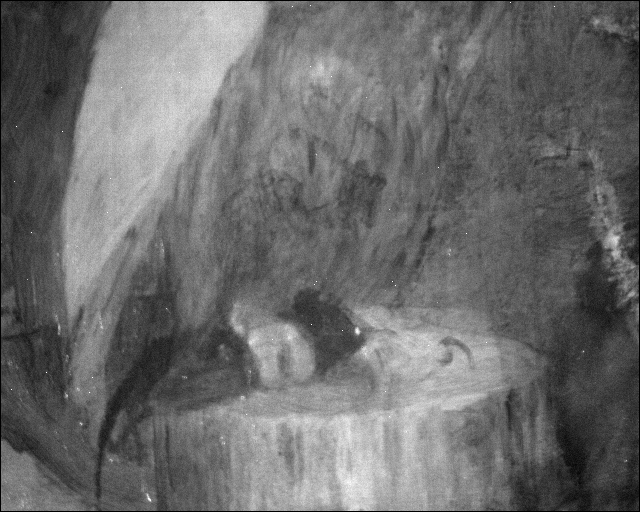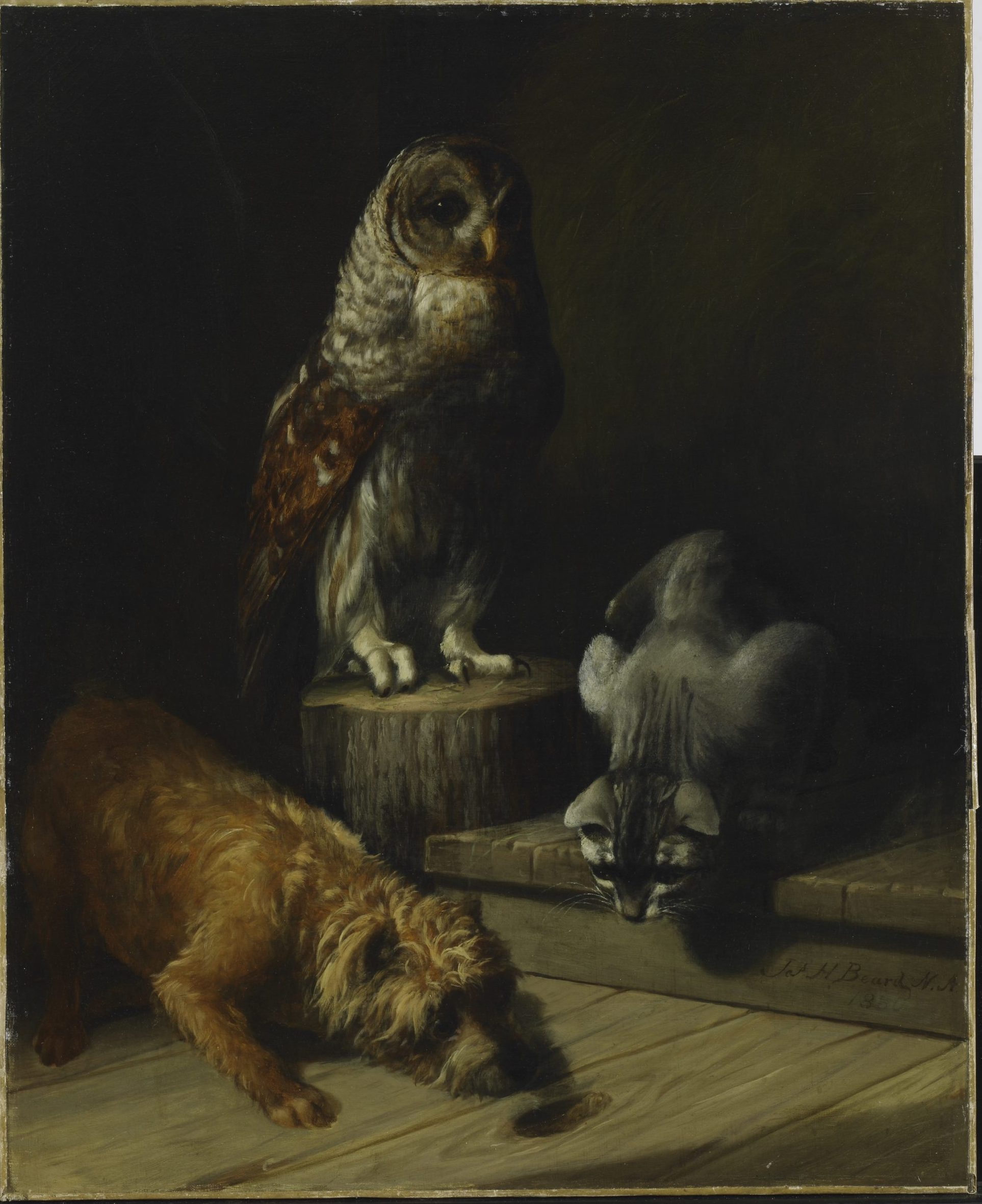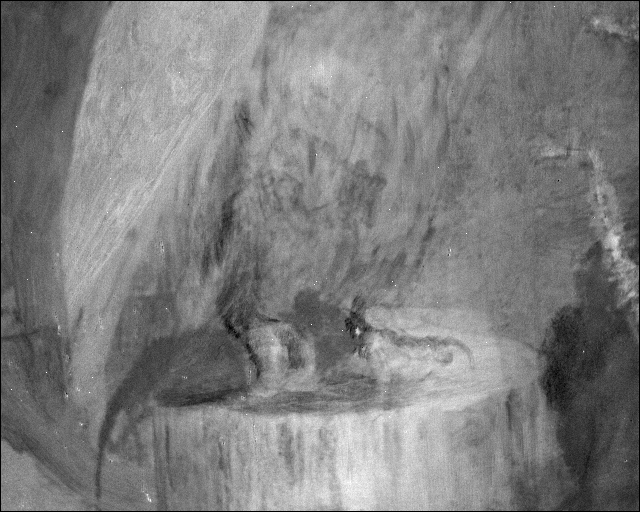Art history’s appeal for me has always been, in part, the detective work. Whether that’s retracing the artist’s life and thoughts through archival documentation, tracking down the location of a private collection painting, or trying to piece together critical responses to art across a myriad of journals and newspaper articles, I get to pull out the “red string” and play connect the dots.

Infrared imagining of James Henry Bead’s A Bird in the Hand is Worth Two in the Bush. Photo courtesy of Middleton Spectral Vision.

James Henry Beard, A Bird in the Hand is Worth Two in the Bush, 1880, oil on canvas, Leigh Yawkey Woodson Art Museum
Recently, a team of scientists from Middleton Spectral Vision spent the day at the Museum helping collect evidence. Light and imaging were our investigative tools for the day. Different types of light—UV, or ultraviolet, and infrared light in particular—are critical tools in the art detective’s toolbox. Both are non-destructive techniques used to examine paintings and reveal hidden details under the upper layers of paint. Armed with a new, portable infrared camera, we set to work. We examined several paintings over the course of the day, many of which revealed instances of underdrawings, compositional changes, and, in one case, a hidden inscription (stay tuned for more). In the case of one painting, James Henry Beard’s A Bird in the Hand is Worth Two in the Bush, the infrared photography revealed the painting’s title. Under the owl’s claw, a captive rodent appeared. The joke, it appeared, is on the poor dog and cat who wait expectedly for one to appear.

Infrared imagining of James Henry Bead’s A Bird in the Hand is Worth Two in the Bush. Photo courtesy of Middleton Spectral Vision.
This type of surprise helps us to tell the full story of the artwork, and in the case of the Beard painting, reveal that the joke is sometimes right under our nose, or in this case, claw.




